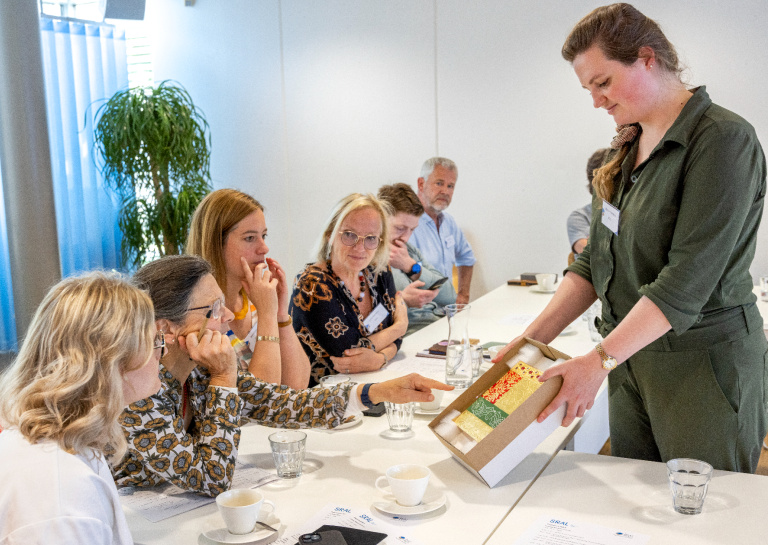PoCo project day 2 at the Limburgs Museum
On June 17, the second project day of Project PoCo (Polychromy Conservation) took place at the Limburgs Museum in Venlo. The program consisted of a number of presentations, including on the progress of the project and the research results of the specialists in training. Furthermore, the Limburgs Museum, as the host location, reflected on the earlier site visit.
After lunch, there was time to visit the museum or to conduct a small investigation in the depot to answer questions that had arisen from the presentations. René de Kam from the MCC then gave a presentation on the origins of their collection, and expert Arnold Truyen spoke about his work in the churches of Venray and Horst. The day ended with a preview of the activities planned for the coming six months.

Research by specialists in training
After a brief summary of the activities of the first year of the PoCo project, Manon Antenbrink kicks off with a presentation about her internship at the stone sculpture studio of KIK-IRPA. During her internship, she had the opportunity to work in the Ruben Chapel in Antwerp and on a statue of the archangel Gabriel. This allowed her to gain a lot of experience in the treatment of (polychrome) stone sculptures.
Ausrine Dambrauskaite
Ausrine then takes over for a presentation of the findings of her research into the figure of Christ and the cross by Jan van Steffenwert. She engages everyone in the question of whether the crucifix could originally have been a triumphal cross. Her discovery of the painting on the back of the cross and her research into missing parts generates considerable enthusiasm among the audience.
Rosanne Snijders
Then it is Rosanne's turn to talk about her research into the altarpiece of the birth of Christ. Her extensive research using X-rays, a microscope, and dendrochronological analysis has yielded many findings about the origin and history of the piece. This leads to the necessary discussions and comparisons about its origin among the specialists present.
Manon Antenbrink
Manon concludes her research and treatment of stone segments from the excavation of St. Servatius Basilica. Using a microscope, she was able to determine the original colors and consolidate them as far as possible. After cleaning, the Hubertus relief was put on display in Maastricht.


